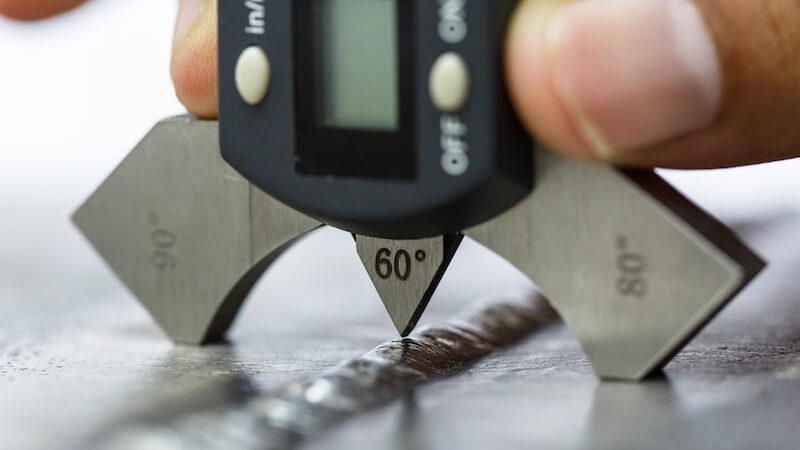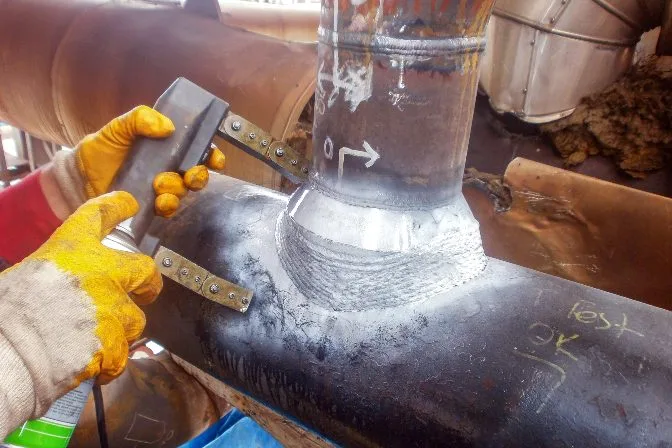An Extensive Checklist for Effective Welding Assessment Practices
In the realm of welding, the stability of structures is paramount, necessitating an extensive technique to inspection practices. A thorough checklist offers as an essential tool in making certain adherence to sector standards, incorporating important pre-welding, in-process, and post-welding assessments. By methodically attending to material verification, weld high quality, and extensive documentation, organizations can dramatically improve safety and performance. Nevertheless, what certain aspects should be prioritized in each phase to accomplish optimum outcomes? Exploring these vital components can yield insights that greatly impact welding operations.
Comprehending Welding Standards
Welding requirements play an essential duty in ensuring the top quality and safety of bonded parts and structures. These requirements develop the criteria for products, treatments, testing, and assessment, thereby supplying a structure for consistent high quality guarantee in welding processes. Different companies, consisting of the American Welding Society (AWS), the International Organization for Standardization (ISO), and the American Culture of Mechanical Designers (ASME), have established detailed criteria that govern different elements of welding.
Recognizing welding standards is vital for specialists in the area, as adherence to these guidelines reduces the danger of issues and failings in bonded joints. These standards cover particular demands for weld top quality, consisting of appropriate resistances, the kind of welding techniques to be made use of, and the qualifications needed for welders and assessors.

Pre-Welding Evaluation Actions
Before any kind of welding process begins, a comprehensive pre-welding examination is vital to identify prospective concerns that may endanger the quality of the weld. This preliminary action acts as an essential foundation for making sure compliance with appropriate welding codes and criteria.
The very first step in the pre-welding examination is to confirm the products being made use of. This includes checking for the right kind and grade of metals as defined in the task documentation. Next, it is vital to evaluate the fit-up of the components to guarantee correct placement and joint configuration. Misalignment can cause poor infiltration and architectural weaknesses.
In addition, evaluating the cleanliness of the surfaces is vital; contaminants such as rust, oil, or paint can detrimentally influence the top quality of the weld. Following this, a thorough assessment of the welding equipment should be conducted, ensuring that it is adjusted and in excellent functioning problem.
Finally, evaluating the certifications of the welding employees is vital. Welders must have the needed qualifications and experience to do the details welds needed for the job. By adhering to these pre-welding inspection actions, the chance of flaws and failures in the final weld can be dramatically minimized.

In-Process Evaluation Strategies
In-process evaluation methods play a vital function in making certain the integrity and high quality of welds as they are being executed. These techniques enable assessors to identify flaws or inconsistencies from requirements in genuine time, thus preventing pricey repair work and making sure adherence to layout requirements.
One key method includes aesthetic examination, where inspectors assess the weld bead for uniformity, penetration, and appropriate profile. This can be matched by the usage of determines to gauge weld measurements, ensuring compliance with predetermined tolerances. Additionally, the implementation of non-destructive testing (NDT) methods, such as ultrasonic testing or magnetic particle testing, during go now the welding process can reveal subsurface flaws that might not show up on the surface.
An additional vital facet is monitoring welding criteria, consisting of voltage, amperage, and take a trip rate. Consistency in these parameters is crucial for achieving optimal weld quality. Recording these criteria throughout the welding operation provides a deducible document for future recommendation.
Training personnel in correct examination strategies and the use of suitable tools boosts the efficiency of in-process evaluations. By integrating these techniques, companies can achieve better welds, minimize rework, and ultimately ensure the safety and security and dependability of welded frameworks.
Post-Welding High Quality Checks
Following the conclusion of welding operations, post-welding top quality checks are important to verify that the welds fulfill all defined standards and needs. These checks are necessary for guaranteeing the integrity and toughness of the bonded joints. The inspection procedure generally starts with a visual exam, evaluating for surface flaws such as cracks, porosity, or insufficient fusion.
Consequently, non-destructive testing (NDT) techniques, such as ultrasonic screening, radiographic testing, or magnetic bit testing, may be used to spot inner defects that are not noticeable to the nude eye. Each technique has its one-of-a-kind advantages and is chosen based upon the weld's location, material kind, and the nature of the application.
Evaluating the mechanical residential or commercial properties of the weld, including tensile strength and ductility, can give more guarantee of performance under operational problems. Generally, complete post-welding assessments are important for maintaining safety, efficiency, and adherence to regulatory and sector requirements.
Documentation and Coverage
Exactly how can reliable paperwork and reporting boost the welding evaluation procedure? Precise documents and extensive coverage are important components that guarantee the stability and high quality of welding operations. Welding Inspection Milwaukee. They work as a formal document of inspection findings, facilitating responsibility and traceability in conformity with industry requirements

A well-structured reporting system makes it possible for inspectors to clearly interact any type of areas, inconsistencies, or non-conformances calling for improvement. This transparency fosters here an atmosphere of constant enhancement, as stakeholders can easily analyze previous efficiency and execute restorative activities.
Additionally, reliable documents consists of thorough documents such as welding treatment requirements (WPS), welder credentials, and examination lists. These components give a structure for reviewing weld top quality and adherence to developed standards. In case of conflicts or high quality issues, comprehensive documentation serves as a dependable reference, reducing obscurity and shielding all events included.
Finally, maintaining organized documents helps in training and accrediting personnel, ensuring that sector finest practices are upheld. Inevitably, careful paperwork and reporting not only boost the welding assessment process yet likewise contribute to the total security and reliability of bonded structures.

Conclusion
To conclude, a comprehensive checklist for reliable welding inspection practices is crucial for making certain quality and security in bonded frameworks. Adherence to developed welding standards, precise pre-welding assessments, strenuous in-process evaluations, and comprehensive post-welding high quality checks jointly add to the honesty of bonded joints. Additionally, diligent documentation and helpful resources reporting of assessment searchings for improve liability and promote continual renovation. Implementing these practices will significantly aid in compliance with industry standards and ultimately foster a culture of quality in welding procedures.
Welding criteria play a critical duty in making sure the high quality and security of welded elements and structures. Various companies, including the American Welding Culture (AWS), the International Company for Standardization (ISO), and the American Society of Mechanical Engineers (ASME), have actually established extensive standards that control different aspects of welding.
Adhering to the completion of welding procedures, post-welding high quality checks are vital to confirm that the welds fulfill all specified requirements and criteria - Welding Inspection Milwaukee.In final thought, a comprehensive list for efficient welding evaluation practices is essential for guaranteeing top quality and security in bonded structures. Adherence to developed welding standards, careful pre-welding evaluations, strenuous in-process evaluations, and comprehensive post-welding top quality checks collectively contribute to the honesty of welded joints